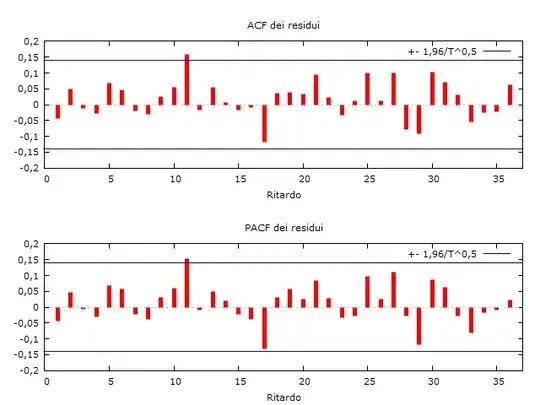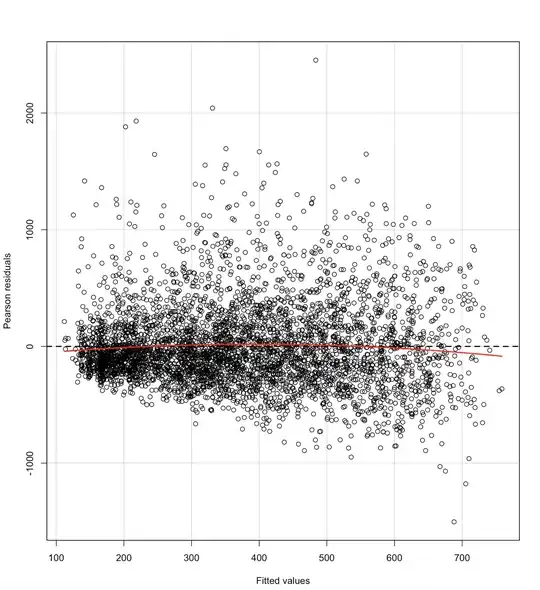I need to draw a bivariate normal distribution ellipse based on this article. It says
In the case of the bivariate normal distribution, both approximate and exact methods are available for calculations of both confidence and tolerance ellipses. We present our modified version of the exact methods using common statistics of the simple linear correlation analysis. Given n pairs of observations $x$ and $y$, with standard deviations $s_x$, and $s_y$, and correlation coefficient $r$, one must fix the $\alpha$ probability level and take the Snedecor's $F_\alpha$ value with 2 and $n-2$ degrees of freedom. The semi-axes $L_1$ and $L_2$, and the slopes $b_1$ and $b_2 = -1/b_1$, of the axes of the $100(1 — \alpha)\%$ confidence and tolerance ellipses can be calculated using equations (1) and (2), respectively.
$$ L_1, L_2 = K\sqrt{(n-1)({s_x}^2 + {s_y}^2) \pm \sqrt{[(n-1)({s_x}^2 + {s_y}^2)]^2 - 4(n-1)^2(1-r^2){s_x}^2 {s_y}^2}} \tag{Eq. 1} $$
where
$K = F/n(n-1)$ for confidence ellipses
$K = F(n+1)/n(n-2)$ for tolerance ellipses
$$ b, -1/b = ({s_y}^2 - {s_x}^2)/2rs_xs_y \pm \sqrt{1 + [({s_y}^2 - {s_x}^2)/2rs_xs_y]^2} \tag{Eq. 2} $$
I won't have access to all the data points, only the means, standard deviations and $r$. But to test the equations I'm using the following data.
x = [19, 25, 22, -1, 4, 14, 21, 22, 23, 27, 29, 25, 29, 15, 29, 24, 0, 2, 26, 17, 19, 9, 20, -6, -13, -13, -11, -4, -4, 11, 23]
y = [28, 28, 26, 19, 16, 24, 26, 24, 24, 29, 29, 27, 31, 26, 38, 23, 13, 14, 28, 19, 19, 17, 22, 2, 4, 5, 7, 8, 14, 14, 23]
From this dataset I get
- $mean_x = 13$
- $mean_y = 20.226$
- $s_x = 13.619$
- $s_y = 8.808$
- $r = 0.924$
I'm using this calculator (with the parameters $v_1$=2, $v_2$=29, cumulative prob=0.9) to get
$F_{90\%} = 2.5$
I'm calculating the following results in Clojure (that's very similar to Lisp), and here is the code I'm using to get them
(def F 2.5)
(def K (/ (* F (inc n))
(* n (- n 2))))
- $K_{90\%} = 0.089$
(def Sx 13.619)
(def Sx2 (* Sx Sx))
(def Sy 8.808)
(def Sy2 (* Sy Sy))
(def r 0.924)
(def r2 (* r r))
(def n 31)
(def L1 (* k
(Math/sqrt (+ (* (dec n) (+ Sx2 Sy2))
(Math/sqrt (- (Math/pow (* (dec n) (+ Sx2 Sy2)) 2)
(* 4 (Math/pow (dec n) 2) (- 1 r2) Sx2 Sy2)))))))
- $L_1^{90\%} = 11.002$
- $L_2^{90\%} = 1.985$
(def b (+ (/ (- Sy2 Sx2)
(* 2 r Sx Sy))
(Math/sqrt (inc (Math/pow (/ (- Sy2 Sx2) (* 2 r Sx Sy)) 2)))))
- $b = 0.625$
This is drawing an ellipse like
where I should get something like this


